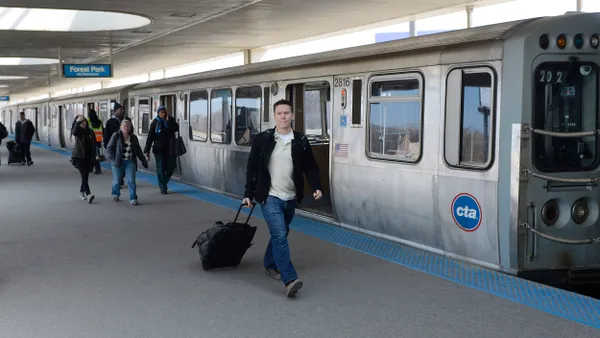Dive Brief:
- The Colorado Department of Transportation released a draft of its statewide active transportation plan June 12, inviting public comments through July 18.
- The plan builds on the state’s original bicycle and pedestrian plan issued in 2012. The new plan includes additional mobility options including electric bikes, scooters, skateboards, roller blades and wheelchairs.
- When finalized, the plan will help shape the state’s transportation policy and set priorities for active transportation projects.
Dive Insight:
Up to a third of Coloradans may not have access to or are unable to drive a personal vehicle, according to the state’s transportation department, but it has become increasingly dangerous to walk or bike in the state.
From 2013 to 2023, pedestrian deaths jumped 161% and fatalities among bicyclists rose 67% in the state. While only 2.6% of traffic collisions in Colorado in 2023 involved these and other vulnerable road users, they accounted for 12% of fatalities and 18% of serious injuries.
“The vision of the Statewide Active Transportation Plan is that Colorado’s active transportation network is safe, well-connected, comprehensive and convenient — our bikeways, sidewalks and trails get people where they want to go,” Darius Pakbaz, director of the Division of Transportation Development, said in a statement.
The plan also aligns with the state’s goal of reducing transportation-related air pollution and greenhouse gas emissions by 2035, which Gov. Jared Polis announced in November. Those goals include doubling the share of non-auto trips from 9.6% to 19.2%, building 3,540 miles of new bike lanes or separated bike paths and adding 1,345 miles of new sidewalks on streets lacking them.
The draft plan focuses on safety, equity, increasing transportation choice and furthering connections among transportation modes and with schools, parks and other locales.
Among the first steps, the state transportation department will inventory gaps in related infrastructure on state highways. That will help focus action on projects that would make the biggest difference in improving safety for vulnerable road users, the plan states. The department also committed to updating the plan every five years.












